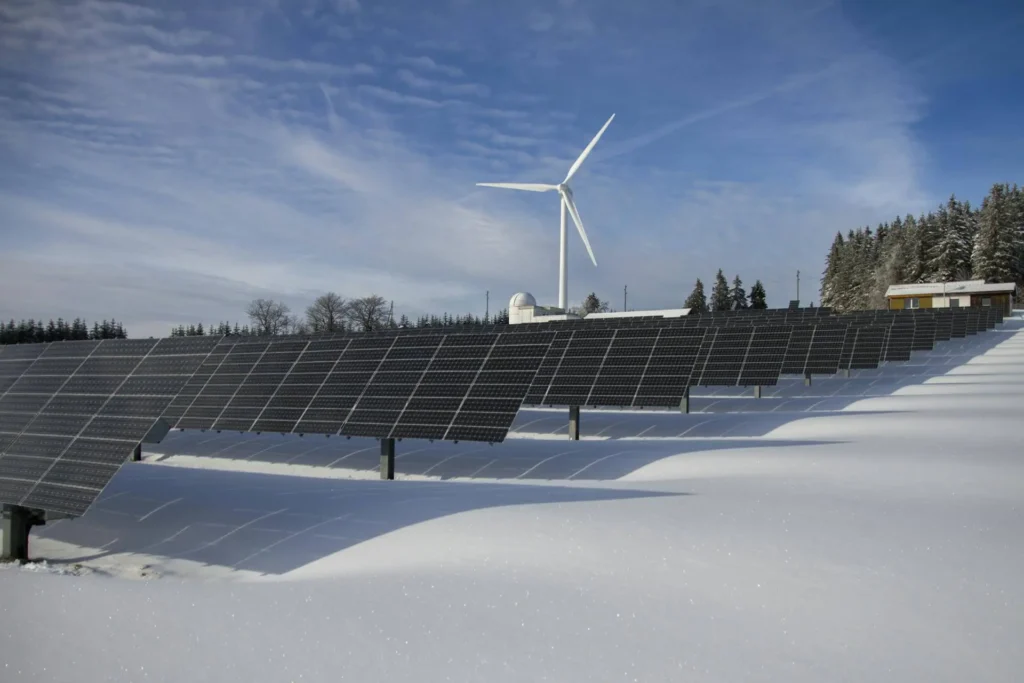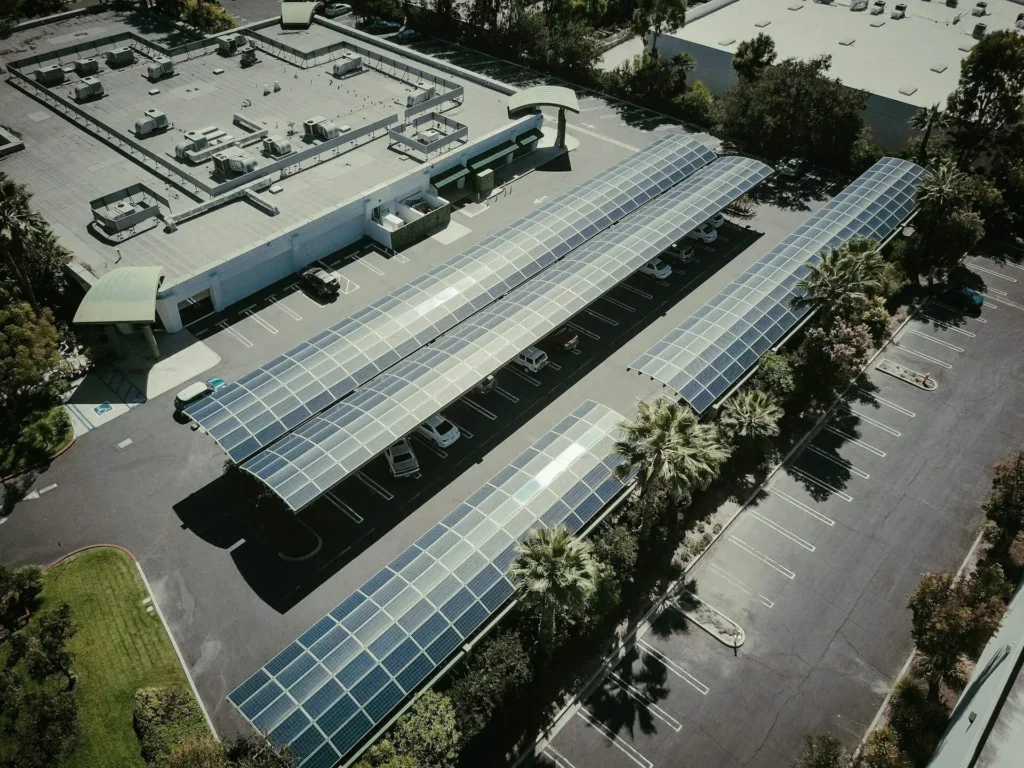In a world grappling with environmental challenges, sustainable technologies emerge as beacons of hope, offering innovative solutions for a greener future. These technologies are not just about preserving our environment; they’re about ensuring a sustainable, efficient, and prosperous future for generations to come. This article delves into what sustainable technologies are, their impact, challenges, and how we can all contribute to this vital movement.

Understanding Sustainable Technologies
At its core, sustainable technology is about creating systems that meet our current needs without compromising the ability of future generations to meet theirs. This concept, deeply rooted in the principle of sustainability, involves developing and using technologies that promote environmental health, economic viability, and social and cultural awareness.
Sustainable technologies are not just limited to new inventions or high-tech gadgets; they often involve innovative applications of existing technology or traditional practices adapted to modern contexts. For example, ancient practices like rainwater harvesting are now combined with modern engineering to create sophisticated water conservation systems.
The evolution of sustainable technologies reflects humanity’s growing awareness of our environmental impact. The industrial revolution, while a time of great technological advancement, also marked the beginning of significant environmental degradation. In response, the late 20th and early 21st centuries have seen a paradigm shift towards technologies that prioritize long-term ecological balance.
This shift is evident in various sectors, from energy production to waste management. In energy, the focus has moved from fossil fuels to renewable sources like solar and wind. In manufacturing, there’s a growing trend towards materials that are recyclable and biodegradable. Even in the digital realm, we see efforts to reduce the environmental impact of our growing dependence on technology, such as more energy-efficient data centers and electronic devices.
Understanding sustainable technologies also involves recognizing the interconnectedness of environmental, economic, and social factors. A technology that is environmentally friendly but economically unfeasible, or socially unacceptable, is not truly sustainable. Therefore, sustainable technologies strive for a balance, offering solutions that are environmentally sound, economically viable, and socially equitable.
Education plays a crucial role in this understanding. By educating ourselves and future generations about the importance and benefits of sustainable technologies, we can foster a more informed and responsible approach to technology development and use. This education must extend beyond formal schooling to include public awareness campaigns, community projects, and corporate responsibility initiatives.

Key Areas of Sustainable Technologies
Sustainable technologies span across various sectors, each playing a crucial role in our journey towards sustainability.
Renewable Energy Sources
Renewable energy, harnessing the power of nature, stands at the forefront of sustainable technology. This section delves into the various forms of renewable energy, highlighting their unique characteristics and the role they play in a sustainable future.
Solar Power
Solar energy, captured through photovoltaic panels or solar thermal systems, is a cornerstone of renewable energy. It’s versatile, suitable for large-scale solar farms and small rooftop installations alike. The technology converts sunlight directly into electricity, offering a clean, abundant energy source. Innovations in solar technology are making it more efficient and affordable, paving the way for increased global adoption.
Wind Energy
Wind turbines convert the kinetic energy of wind into electricity. This form of energy harnesses one of the most abundant natural forces and is particularly effective in areas with consistent wind patterns. Modern wind farms can be found both onshore and offshore, with advancements in turbine technology continually improving efficiency and reducing environmental impact.
Hydropower
Utilizing the flow of water in rivers, streams, or dams, hydropower is one of the oldest and most established forms of renewable energy. It’s highly efficient and can provide a steady, reliable source of electricity. However, its environmental impact, particularly on aquatic ecosystems and local communities, is a subject of ongoing research and improvement.
Geothermal Energy
This energy is derived from the Earth’s internal heat. Geothermal plants tap into underground reservoirs of steam or hot water to generate electricity. It’s a powerful, reliable energy source with a small footprint, though its availability is limited to regions with specific geological conditions.
Biomass and Bioenergy
Biomass energy comes from organic materials like plants, wood, and waste. When these materials are burned, or biologically digested, they release energy that can be used for heating or electricity. Biomass is a renewable source when managed sustainably, but its environmental impact varies depending on the source material and technology used.
Emerging Technologies
In addition to these established sources, there are emerging renewable technologies like tidal and wave energy, which harness the power of ocean currents and waves. While still in the early stages of development, these technologies represent the ongoing innovation in the field of renewable energy.
The transition to renewable energy sources is crucial in the fight against climate change. These technologies not only reduce greenhouse gas emissions but also offer a path towards energy independence and economic growth. Governments, businesses, and individuals are increasingly recognizing the importance of investing in renewable energy, both to protect the environment and to stimulate sustainable economic development.
Renewable energy is not just an alternative to traditional fossil fuels; it’s a key component of a sustainable future, offering a cleaner, more equitable, and resilient energy system for generations to come.
Sustainable Agriculture and Food Systems
Revolutionizing the way we grow and consume food, sustainable agriculture integrates respect for nature with efficient production. This approach to agriculture seeks to balance environmental health, economic profitability, and social and economic equity.
Permaculture
Permaculture is a design system that mimics the patterns and relationships found in nature. It emphasizes diversity, resilience, and the sustainable use of resources. Permaculture farms aim to create self-sustaining ecosystems, where waste from one process becomes input for another, thereby minimizing waste and maximizing efficiency.
Organic Farming
This method avoids the use of synthetic fertilizers and pesticides, relying instead on natural processes and materials to maintain soil fertility and control pests. Organic farming not only reduces the environmental impact of agriculture but also produces food that many consider to be safer and more nutritious.
Hydroponics and Aquaponics
These soil-less farming techniques use nutrient-rich water to grow plants. Hydroponics involves growing plants in a water-based solution, while aquaponics combines this with fish farming, where fish waste provides nutrients for the plants. These systems can be highly efficient and are particularly suitable for urban environments where space is limited.
Agroforestry and Polycultures
Agroforestry involves integrating trees and shrubs into agricultural landscapes. This practice can enhance biodiversity, improve soil health, and increase farm productivity. Polycultures, where multiple crop species are grown together, also enhance biodiversity and can lead to more resilient farming systems.
Regenerative Agriculture
This approach goes beyond sustainability, aiming to actively regenerate depleted soils and ecosystems. It involves practices like cover cropping, no-till farming, and rotational grazing, which increase soil organic matter, enhance biodiversity, and sequester carbon.
Urban Agriculture
Urban farming involves growing food in urban areas, utilizing rooftops, balconies, and vacant lots. This not only brings food production closer to consumers, reducing transportation emissions, but also helps to green urban spaces and can foster a sense of community.
Sustainable Livestock Management
Sustainable livestock practices focus on animal welfare, efficient use of resources, and minimizing environmental impact. This can include rotational grazing, organic feed, and integrating livestock into broader agricultural systems.
Food Waste Reduction
Reducing food waste is a critical component of sustainable food systems. This involves improving food storage and transportation, encouraging responsible consumer behavior, and finding uses for food that would otherwise be discarded.
Sustainable agriculture and food systems are about more than just producing food; they’re about nurturing ecosystems, supporting communities, and preserving the planet for future generations. By adopting these practices, farmers can produce enough food to meet the world’s needs while also safeguarding the environment, supporting rural livelihoods, and helping to build a more sustainable future.
Green Building and Sustainable Urban Planning
Green building and urban planning are reshaping our cities, prioritizing sustainability in every brick laid and road constructed. These practices focus on reducing the environmental impact of buildings and urban areas while improving the quality of life for their inhabitants.
Green Building Principles
Green buildings are designed to minimize energy and water consumption, reduce greenhouse gas emissions, and provide healthier living spaces. Key features often include energy-efficient appliances, renewable energy systems like solar panels, sustainable building materials, and designs that maximize natural light and ventilation. Green buildings also often incorporate water-saving fixtures and rainwater harvesting systems to reduce water usage.
Sustainable Urban Planning
This involves designing cities that are environmentally sustainable, economically viable, and socially inclusive. Key aspects include promoting public transportation, cycling, and walking to reduce reliance on cars; creating green spaces like parks and community gardens; and developing mixed-use areas that combine residential, commercial, and recreational spaces. Sustainable urban planning aims to create cities that are not only more environmentally friendly but also more livable and vibrant.
Smart Cities
Smart cities use technology to improve the efficiency of urban services and the quality of life for residents. This can include everything from intelligent transportation systems that reduce traffic and pollution, to smart grids that optimize energy use, to sensors that monitor air quality. Smart cities aim to be more adaptive and responsive to the needs of their residents, using technology as a tool to enhance sustainability and livability.
Eco-Friendly Materials and Resources
Sustainable construction involves using materials that are environmentally friendly, durable, and recyclable. This includes sustainably sourced wood, bamboo, recycled metal and plastic, and low-VOC (volatile organic compounds) paints and finishes. The use of these materials helps reduce the environmental impact of buildings both during construction and throughout their lifecycle.
Energy Efficiency and Renewable Energy
Energy efficiency is a cornerstone of green building. This can involve high-efficiency heating and cooling systems, insulation, energy-efficient windows, and LED lighting. Many green buildings also incorporate renewable energy sources, such as solar panels or wind turbines, to further reduce their environmental impact.

The Impact of Sustainable Technologies
The impact of sustainable technologies extends far beyond environmental benefits, influencing economies and societies globally. These technologies are pivotal in shaping a sustainable future, offering a myriad of benefits across various domains.
Environmental Benefits
The environmental benefits of sustainable technologies are vast and critical in addressing the planet’s ecological challenges. These technologies are designed to have a positive impact on the environment, contributing to the preservation and restoration of ecological balance.
Reduction of Greenhouse Gas Emissions
One of the most significant environmental benefits of sustainable technologies, particularly renewable energy sources, is the substantial reduction in greenhouse gas emissions. Unlike fossil fuels, which release carbon dioxide and other harmful gases, renewable energy sources like solar, wind, and hydroelectric power produce little to no emissions. This reduction is crucial in mitigating the effects of climate change.
Conservation of Natural Resources
Sustainable technologies often focus on the efficient use of resources, aiming to reduce consumption and waste. This includes water-saving technologies in agriculture, energy-efficient appliances and buildings, and the recycling and repurposing of materials. By using resources more efficiently, we can reduce the strain on the planet’s natural resources, preserving them for future generations.
Reduction in Pollution
Beyond reducing greenhouse gases, sustainable technologies also help decrease other forms of pollution. For example, electric vehicles and renewable energy sources significantly reduce air pollution, which can have immediate health benefits for communities. Similarly, sustainable waste management technologies help reduce soil and water pollution.
Promoting Biodiversity
Sustainable practices in agriculture and urban development can help protect and even enhance biodiversity. Techniques like organic farming, agroforestry, and the creation of green spaces within urban areas provide habitats for various species and help maintain ecological balance.
Climate Change Mitigation
By reducing emissions and conserving resources, sustainable technologies play a crucial role in combating climate change. This includes not only the reduction of carbon emissions but also the development of technologies that help communities adapt to climate change impacts, such as sea-level rise and extreme weather events.
Sustainable Land Use and Reduced Deforestation
Technologies that promote efficient land use, such as precision agriculture and vertical farming, can reduce the need for deforestation and land degradation. This is crucial for maintaining ecosystems, as forests and other natural landscapes play a vital role in carbon sequestration and supporting biodiversity.
Energy and Water Efficiency
Sustainable technologies often lead to increased energy and water efficiency. For instance, green buildings designed for energy efficiency reduce the demand for electricity, while water-efficient appliances and fixtures decrease water consumption, helping to conserve these vital resources.
Renewable and Circular Economy
Sustainable technologies are key drivers of the shift towards a renewable and circular economy, where waste is minimized, and materials are reused and recycled. This approach not only reduces environmental impact but also encourages a more sustainable and resilient economic model.
Economic Impacts and Job Creation
Sustainable technologies not only contribute significantly to environmental conservation but also have a profound impact on the economy and job market. Their influence spans various sectors, driving economic growth and creating new employment opportunities.
Creation of New Industries and Markets
The rise of sustainable technologies has led to the emergence of new industries and markets. Renewable energy, green building, sustainable agriculture, and electric vehicles are examples of sectors that have experienced significant growth due to the shift towards sustainability. These industries are not just niche markets; they are becoming central to the global economy.
Job Creation in Renewable Energy
The renewable energy sector is a major job creator. According to the International Renewable Energy Agency (IRENA), the number of jobs in renewable energy worldwide continued to grow, reaching 11.5 million in 2019. This trend is expected to continue as the demand for renewable energy sources grows. Jobs in this sector include manufacturing, installation, maintenance, and research and development.
Economic Diversification and Resilience
Sustainable technologies contribute to economic diversification, reducing dependence on traditional industries like fossil fuels. This diversification can make economies more resilient to global changes, such as fluctuations in oil prices or the increasing impacts of climate change.
Cost Savings and Efficiency Gains
Sustainable technologies often lead to cost savings and efficiency gains for businesses and consumers. Energy-efficient appliances, for example, reduce electricity bills, while sustainable farming practices can decrease the need for expensive chemical fertilizers and pesticides. Over time, these savings can be significant, contributing to economic well-being.
Attracting Investment
Sustainability has become a key factor for investors. There is a growing trend in sustainable investing, where investors look for companies that are not only financially sound but also have strong environmental and social practices. This shift is driving more capital towards sustainable technologies and businesses.
Boosting Local Economies
Sustainable technologies can also boost local economies, especially in rural and remote areas. Renewable energy projects, for instance, can provide local jobs and increase energy independence. Sustainable tourism, another growing sector, can bring new economic opportunities to communities while preserving their natural and cultural heritage.
Global Competitiveness
Countries that invest in sustainable technologies are positioning themselves as leaders in the global economy. By fostering innovation and adopting cutting-edge sustainable practices, these countries are likely to have a competitive advantage in the increasingly sustainability-conscious global market.
Transitioning to a Green Economy
The shift towards sustainable technologies is a key component of the transition to a green economy. This economic model aims to achieve sustainable development without degrading the environment, based on principles such as resource efficiency, low carbon growth, and social inclusion.
Enhancing Energy Security
Sustainable technologies play a crucial role in enhancing energy security, a critical aspect for any nation’s economic stability and strategic autonomy. Energy security involves ensuring a reliable and adequate supply of energy at affordable prices. Sustainable technologies contribute to this in several ways:
Diversification of Energy Sources
Traditional reliance on fossil fuels like oil, coal, and natural gas creates vulnerabilities, including price volatility and geopolitical risks. Sustainable technologies, particularly renewable energy sources like solar, wind, and hydro, diversify the energy mix. This diversification reduces dependence on any single source or global market fluctuations, thereby enhancing energy security.
Local Energy Generation
Many sustainable technologies enable local or regional energy generation. Solar panels on homes, wind farms in rural areas, and bioenergy from local biomass are examples where energy production is brought closer to where it is consumed. This decentralization reduces reliance on large-scale infrastructure and long-distance energy transportation, which can be susceptible to disruptions.
Reducing Import Dependence
Countries heavily reliant on energy imports are vulnerable to external supply disruptions and global market changes. By investing in domestic renewable energy sources, these countries can reduce their import dependence, thereby enhancing their energy autonomy and security.
Stabilizing Energy Prices
Renewable energy sources, once established, have low operational costs and are less subject to the price volatility seen in fossil fuel markets. This stability can be particularly advantageous for countries and regions that experience high or fluctuating energy prices. Over time, the widespread adoption of sustainable technologies can contribute to more stable and predictable energy pricing.
Resilience to Environmental and Geopolitical Changes
Sustainable technologies are often more resilient to environmental and geopolitical changes. For example, solar and wind power are less likely to be impacted by international conflicts or trade disputes that can affect oil and gas supplies. Additionally, they are less susceptible to the impacts of climate change, such as reduced water availability affecting hydroelectric power.
Innovation Leading to Energy Independence
The push for sustainable technologies drives innovation in energy storage, smart grid technology, and energy efficiency. Advances in battery technology and energy management systems allow for more effective storage and use of renewable energy, reducing wastage and increasing the reliability of these sources.
Long-term Sustainability
Unlike fossil fuels, which are finite and will eventually deplete, renewable energy sources are essentially inexhaustible. Investing in these technologies ensures a long-term, sustainable energy supply, safeguarding against the future scarcity of traditional energy resources.
Compliance with Global Energy Policies
As global energy policies increasingly favor sustainability and carbon reduction, countries investing in sustainable technologies are better positioned to meet these requirements. This alignment not only enhances energy security but also ensures compliance with international environmental and energy standards.
Social and Health Benefits
Sustainable technologies offer significant social and health benefits, contributing to the well-being of communities and individuals. These benefits are diverse, touching on various aspects of daily life.
Improved Air Quality
One of the most direct health benefits of sustainable technologies, particularly renewable energy and electric vehicles, is improved air quality. By reducing emissions from fossil fuels, these technologies decrease air pollution, a major cause of respiratory diseases like asthma and bronchitis, as well as cardiovascular problems.
Increased Physical Activity
Sustainable urban planning that promotes walking, cycling, and the use of public transport can lead to more physically active populations. This shift from car-centric cities to more walkable, bike-friendly environments can reduce obesity rates and associated health problems.
Mental Health and Well-being
Access to green spaces and a cleaner environment also has a positive impact on mental health. Studies have shown that regular contact with nature can reduce stress, anxiety, and depression. Sustainable urban design that incorporates parks, gardens, and other green elements can significantly enhance mental well-being.
Social Cohesion and Community Development
Sustainable technologies often encourage stronger community ties. For example, community-based renewable energy projects or urban gardens can foster a sense of community and belonging, improving social cohesion and community resilience.
Job Satisfaction and Safety
Jobs in the sustainability sector can offer higher levels of job satisfaction due to their contribution to societal and environmental goals. Additionally, renewable energy industries tend to have lower accident rates compared to traditional energy sectors like coal mining or oil drilling, leading to safer working conditions.
Promoting Innovation and Technology Development
The drive towards sustainable technologies is a powerful catalyst for innovation and technological development. This movement not only addresses environmental challenges but also spurs creativity and progress in various sectors.
Stimulating Research and Development
The quest for sustainability is pushing both public and private sectors to invest in research and development (R&D) of new technologies. This investment is crucial for discovering and developing innovative solutions that can reduce environmental impact and improve efficiency. Areas like renewable energy, battery storage, and sustainable materials are particularly ripe for innovation.
Encouraging Cross-Disciplinary Collaboration
Sustainable technology development often requires a multidisciplinary approach, bringing together experts from fields such as engineering, environmental science, biology, and information technology. This collaboration fosters a cross-pollination of ideas, leading to more holistic and effective solutions.
Driving Technological Advancements in Traditional Industries
The push for sustainability is also transforming traditional industries. For example, the automotive industry is undergoing a significant shift with the development of electric vehicles. Similarly, the construction industry is innovating with green building materials and techniques. These advancements not only benefit the environment but also enhance the competitiveness of these industries.
Scaling Up Sustainable Solutions
Innovation in sustainable technologies is not just about creating new products; it’s also about finding ways to scale up and make these solutions more accessible and affordable. This includes improving manufacturing processes, supply chain management, and distribution networks to bring sustainable products to a broader market.
Fostering a Culture of Innovation
The focus on sustainable technologies is creating a culture that values innovation and long-term thinking. This cultural shift is essential for encouraging ongoing investment in R&D and for attracting talent to the field of sustainability.
Global Technology Transfer
Sustainable technology development often involves the transfer of technologies between countries, especially from developed to developing nations. This transfer is crucial for global efforts to combat climate change and promote sustainable development worldwide.
Leveraging Digital Technologies
Digital technologies like artificial intelligence, big data, and the Internet of Things (IoT) are playing a crucial role in advancing sustainable technologies. They enable more efficient resource use, better monitoring and management of environmental impacts, and the development of smart, interconnected systems.
Creating New Business Opportunities
The demand for sustainable technologies is opening up new business opportunities and markets. Startups and established companies alike are finding niches in areas like renewable energy, sustainable agriculture, and eco-friendly products, driving economic growth and job creation.
Cultural and Behavioral Shifts
The adoption of sustainable technologies often requires and fosters significant shifts in cultural attitudes and behaviors. These changes are crucial for the long-term success and integration of sustainability efforts in society.
Increasing Environmental Awareness
The rise of sustainable technologies has heightened public awareness of environmental issues. As people become more informed about the impacts of climate change and resource depletion, there’s a growing recognition of the need for sustainable living practices. This awareness is the first step in changing behaviors at both the individual and collective levels.
Shift in Consumer Preferences
There’s a noticeable shift in consumer behavior towards more sustainable products and services. People are increasingly seeking out eco-friendly options, from renewable energy sources to organic foods and green transportation. This shift is not only driven by environmental concerns but also by the desire for healthier lifestyles and ethical consumption.
Adoption of Sustainable Practices in Daily Life
As sustainable technologies become more accessible and affordable, individuals are more likely to integrate them into their daily lives. This includes practices like recycling, using energy-efficient appliances, and reducing water consumption. Over time, these behaviors can become ingrained in cultural norms.
Corporate Responsibility and Green Branding
Businesses are responding to this cultural shift by adopting more sustainable practices and promoting green branding. Corporate social responsibility (CSR) initiatives that focus on sustainability are becoming standard, as companies recognize the importance of being environmentally conscious in the eyes of consumers and stakeholders.
Educational Shifts
Education systems are increasingly incorporating sustainability into their curricula, teaching students about the importance of environmental stewardship and sustainable technologies. This education is crucial for preparing future generations to make informed decisions about the environment and technology.
Community Engagement and Grassroots Movements
Sustainable technologies often encourage community engagement and grassroots movements. Local renewable energy projects, community gardens, and recycling programs are examples where communities come together to implement sustainable solutions. These initiatives not only have environmental benefits but also strengthen community bonds.
Policy and Regulatory Changes
As public awareness and demand for sustainability grow, there is increased pressure on governments to enact policies and regulations that support sustainable technologies and practices. This can include incentives for renewable energy, regulations on emissions, and support for sustainable urban development.
Global Perspective and Cooperation
The global nature of environmental challenges has fostered a sense of international cooperation and a global perspective on sustainability. People are increasingly recognizing that environmental issues know no borders and that global cooperation is essential for addressing these challenges.
Global Collaboration and Policy Development
The global nature of environmental challenges necessitates international collaboration and the development of cohesive policies that promote sustainable technologies. This aspect of sustainability is critical in ensuring a unified and effective global response to environmental issues.
International Agreements and Protocols
Global collaboration in sustainability is often formalized through international agreements and protocols. The Paris Agreement on climate change, for instance, is a landmark accord where countries commit to carbon reduction targets. Such agreements create a framework for collective action and encourage countries to invest in sustainable technologies.
Sharing Best Practices and Technologies
Countries and organizations around the world are increasingly sharing knowledge, best practices, and technologies related to sustainability. This exchange is vital for countries that may lack the resources or expertise to develop these technologies independently. By sharing innovations, the global community can accelerate the adoption of sustainable technologies.
Joint Research and Development Initiatives
Collaborative international research projects and partnerships play a crucial role in advancing sustainable technologies. These initiatives often bring together the best minds from around the world, pooling resources and expertise to tackle complex environmental challenges.
Global Standards and Regulations
Developing global standards and regulations for sustainable technologies ensures consistency and safety in their implementation. These standards can cover a wide range of areas, from emissions and energy efficiency to the use of certain materials and chemicals. Harmonized standards are particularly important in a globalized economy where products and technologies cross borders.
Financial Mechanisms and Funding
International financial mechanisms, such as the Green Climate Fund, are established to support the development and deployment of sustainable technologies, especially in developing countries. These funds help to ensure that all nations have the means to participate in the global shift towards sustainability.
Capacity Building and Technical Assistance
Developed countries often provide technical assistance and capacity building to help developing nations adopt sustainable technologies. This assistance can take various forms, including training, consultancy, and the transfer of technology.
Addressing Global Inequities
Collaboration in sustainable technology also involves addressing global inequities. Developing countries, which often bear the brunt of environmental degradation, may lack the resources to invest in sustainable technologies. International collaboration can help bridge this gap, ensuring a more equitable distribution of technology and its benefits.
Policy Coherence and Coordination
Effective global collaboration requires coherent and coordinated policies. This involves aligning national policies with international goals and ensuring that different policy areas, such as trade, energy, and environment, work together towards sustainability objectives.

Challenges and Limitations
Despite the potential of sustainable technologies to revolutionize our approach to environmental conservation and resource management, they face a range of challenges and limitations. Addressing these issues is crucial for the successful implementation and widespread adoption of these technologies.
Technical and Development Challenges
Many sustainable technologies are still in the development phase and may not yet be as efficient or effective as traditional technologies. For instance, some renewable energy sources face challenges in terms of energy storage and consistent output. Overcoming these technical hurdles requires ongoing research and development.
High Initial Costs
The upfront cost of implementing sustainable technologies can be a significant barrier. For example, installing solar panels or transitioning to green building practices often requires a substantial initial investment, even though there may be long-term savings. Finding ways to reduce these initial costs is crucial for broader adoption.
Infrastructure and Integration Issues
Integrating sustainable technologies into existing infrastructures can be challenging. For instance, transitioning to renewable energy sources might require significant changes to the current power grid. Similarly, adopting electric vehicles on a large scale requires a network of charging stations.
Policy and Regulatory Hurdles
In many regions, there is a lack of supportive policies and regulations for sustainable technologies. This includes insufficient incentives, bureaucratic hurdles, and outdated regulations that favor traditional technologies. Effective policy frameworks are essential to encourage investment in and adoption of sustainable technologies.
Market Dynamics and Economic Barriers
The market dynamics of sustainable technologies can be complex. They often compete with established industries that benefit from economies of scale and may receive subsidies or other forms of government support. Changing these market conditions to favor sustainable technologies involves both economic and political challenges.
Access and Equity Concerns
There is a risk that the benefits of sustainable technologies may not be evenly distributed. Developing countries, in particular, may face barriers to accessing these technologies, leading to a widening of the global inequality gap. Ensuring equitable access is a significant challenge that needs to be addressed.
Social Acceptance and Cultural Barriers
Changing long-standing habits and cultural norms can be difficult. For sustainable technologies to be truly effective, they need to be accepted and embraced by society. This requires public education and awareness campaigns to shift perceptions and encourage behavioral change.
Resource Availability and Supply Chain Issues
The production of sustainable technologies often requires specific materials, some of which are rare or have limited sources. Ensuring a sustainable and ethical supply of these materials is a challenge. Additionally, global supply chain issues can impact the production and distribution of these technologies.
Environmental Trade-Offs
While sustainable technologies are designed to be environmentally friendly, they can have unintended ecological impacts. For example, the production of solar panels involves hazardous materials, and wind turbines can impact bird populations. Addressing these environmental trade-offs is important for the holistic sustainability of these technologies.

Case Studies: Success Stories Around the Globe
The global landscape is dotted with success stories that highlight the effectiveness and transformative power of sustainable technologies. These case studies not only demonstrate the feasibility of such technologies but also serve as models for replication and inspiration.
Germany’s Renewable Energy Transition (Energiewende)
Germany’s ambitious energy transition policy, known as ‘Energiewende’, has positioned it as a global leader in renewable energy. The country has made significant investments in solar and wind power, aiming to phase out nuclear power and drastically reduce greenhouse gas emissions. This commitment has not only reduced Germany’s carbon footprint but also stimulated a robust renewable energy sector, creating jobs and driving innovation.
Denmark’s Wind Energy Success
Denmark is a pioneer in wind energy, with wind turbines contributing a significant portion of its total electricity consumption. The country’s commitment to wind power demonstrates how a nation can effectively transition to renewable energy sources, reduce its reliance on fossil fuels, and achieve energy independence.
Singapore’s Green Building Initiative
Singapore, with its limited land and resources, has become a leader in green building practices. The Building and Construction Authority (BCA) of Singapore has implemented the Green Mark Scheme, encouraging the development of energy-efficient and environmentally friendly buildings. This initiative has not only improved the sustainability of urban development in Singapore but also enhanced the quality of life for its residents.
Costa Rica’s Renewable Energy Achievements
Costa Rica is another notable success story, having run on nearly 100% renewable energy for several years. The country utilizes a mix of hydroelectric, wind, geothermal, and solar power to meet its energy needs. Costa Rica’s commitment to renewable energy is part of its broader strategy to become carbon-neutral.
Bhutan’s Carbon Negativity
Bhutan stands out as the world’s only carbon-negative country. This means it absorbs more carbon than it emits, thanks to its vast forests and commitment to environmental conservation. Bhutan’s approach to development, guided by the philosophy of Gross National Happiness, places a strong emphasis on environmental sustainability.
Morocco’s Solar Power Project – Noor Ouarzazate
Morocco is home to one of the world’s largest solar power plants, Noor Ouarzazate. This project is part of Morocco’s plan to reduce dependence on fossil fuels and develop its renewable energy resources. The solar plant significantly contributes to the country’s goal of generating 42% of its electricity from renewable sources.
Sweden’s Waste-to-Energy Program
Sweden has an innovative approach to waste management, with its highly successful waste-to-energy program. The country converts household waste into energy, providing heating and electricity. This system not only reduces landfill use but also provides a sustainable energy source.
Iceland’s Geothermal Energy Utilization
Iceland is renowned for its use of geothermal energy, which provides heating and electricity to a significant portion of its population. The country’s unique geology allows it to tap into geothermal resources, reducing its reliance on imported fossil fuels and lowering its greenhouse gas emissions.
These case studies from around the world demonstrate the diverse ways in which sustainable technologies can be implemented to achieve environmental goals, economic growth, and social well-being. They provide valuable lessons and blueprints for other nations and communities aiming to embark on a sustainable path.

The Future of Sustainable Technologies
The future of sustainable technologies is not just a narrative of innovation but also of hope and action. As we advance, these technologies are set to play an even more integral role in shaping a sustainable future, driven by continuous improvements, emerging trends, and a growing global commitment to sustainability.
Advancements in Efficiency and Accessibility
Future developments in sustainable technologies are likely to focus on increasing efficiency and making them more accessible and affordable. This includes improving the cost-effectiveness and performance of renewable energy sources, developing more efficient battery storage solutions, and creating sustainable materials that are easier to produce and recycle.
Integration of Artificial Intelligence and Machine Learning
AI and machine learning are expected to significantly enhance the capabilities of sustainable technologies. From optimizing energy use in smart grids to improving waste management systems, these advanced technologies can provide smarter, more efficient, and more adaptable solutions to environmental challenges.
Expansion of Green Infrastructure
The concept of green infrastructure, including green buildings, sustainable urban design, and eco-friendly transportation systems, is likely to become more mainstream. This expansion will be driven by a growing recognition of the environmental, economic, and social benefits of green infrastructure.
Advances in Sustainable Agriculture
Innovations in sustainable agriculture, such as precision farming, vertical farming, and genetically modified crops that require fewer resources, are set to transform the agricultural sector. These advances will aim to increase food production sustainably to meet the growing global demand.
Decentralization of Energy Systems
The future may see a more decentralized energy system, with local microgrids and community-based renewable energy projects becoming more common. This shift can empower communities, increase energy security, and reduce the environmental impact of energy production and distribution.
Sustainable Water Management Technologies
As water scarcity becomes a more pressing issue, technologies for water conservation, desalination, and efficient irrigation will become increasingly important. Sustainable water management will be crucial for both urban and agricultural settings.
Growth of the Circular Economy
The concept of a circular economy, where waste is minimized, and materials are reused and recycled, is expected to gain more traction. This approach will be facilitated by innovations in materials science, waste processing, and product design.
Global Policy and Regulatory Support
The future of sustainable technologies will likely be shaped by stronger global policy and regulatory support. This could include international agreements on carbon reduction, incentives for sustainable practices, and regulations that phase out unsustainable technologies.
Public Awareness and Education
As public awareness of environmental issues grows, there will be an increased demand for sustainable technologies. Education will play a key role in this, teaching current and future generations about the importance of sustainability and how to implement these technologies effectively.
Emerging Technologies and Unforeseen Innovations
The future may hold sustainable technologies that we have not yet imagined. Continuous research and a spirit of innovation will likely lead to new discoveries and solutions that could further revolutionize how we approach sustainability.
In summary, the future of sustainable technologies is bright and full of potential. It promises advancements that not only address environmental concerns but also offer economic and social benefits. As we continue to innovate and adapt, these technologies will be pivotal in steering our world towards a more sustainable and resilient future.

How Individuals and Communities Can Contribute
The journey towards a sustainable future is not just for governments and corporations; individuals and communities play a pivotal role too. There are numerous ways in which personal choices and collective actions can make a significant impact.
Adopting Sustainable Lifestyle Choices
Individuals can contribute by making sustainable choices in their daily lives. This includes using energy-efficient appliances, reducing water consumption, recycling, choosing sustainable transportation options like biking or public transit, and reducing meat consumption. Small changes, when multiplied across millions of people, can lead to substantial environmental benefits.
Supporting Renewable Energy
Homeowners can install solar panels, participate in community solar programs, or choose energy providers that supply renewable energy. Renters and individuals without the option to choose their energy source can still advocate for renewable energy policies at the local and national levels.
Engaging in Sustainable Consumption
Consumers have the power to drive change by supporting companies and products that are environmentally responsible. This includes buying locally sourced food, choosing products with minimal packaging, supporting businesses with strong sustainability practices, and avoiding single-use plastics.
Community-Based Initiatives
Communities can come together to initiate or participate in sustainability projects like community gardens, local clean-up efforts, recycling programs, and carpooling systems. These initiatives not only have a direct environmental impact but also strengthen community bonds and raise awareness about sustainability issues.
Advocacy and Education
Individuals and communities can advocate for environmental policies and participate in local decision-making processes. Educating others about the importance of sustainability and how to implement sustainable practices is also crucial. This can be done through workshops, school programs, social media, and community events.
Volunteering and Supporting NGOs
Volunteering for environmental organizations or supporting non-governmental organizations (NGOs) that focus on sustainability can amplify individual efforts. These organizations often work on larger-scale projects and can benefit greatly from community support, whether it’s through volunteering time or financial donations.
Sustainable Investment and Savings
Individuals can also contribute by investing in sustainable companies or funds. Additionally, saving money in banks that finance green projects can indirectly support the development of sustainable technologies and initiatives.
Building Resilient Communities
Communities can work together to build resilience against climate change impacts. This includes participating in or initiating local projects for disaster risk reduction, such as tree planting to prevent soil erosion or community training for emergency response.
Promoting Sustainable Urban Development
Residents can advocate for sustainable urban planning in their communities. This includes supporting the development of green spaces, bike lanes, efficient public transport, and sustainable housing projects.
Cultural and Behavioral Change
Finally, one of the most significant contributions individuals and communities can make is to foster a culture that values sustainability. This cultural shift can influence policy, corporate behavior, and societal norms, creating a more sustainable world for current and future generations.
In conclusion, the contributions of individuals and communities are essential in the transition to a sustainable future. Through a combination of lifestyle changes, advocacy, community action, and support for sustainable practices and technologies, everyone can play a part in creating a more sustainable and environmentally responsible world.
Our Path Forward: A Call to Sustainable Action
As we stand at the crossroads of environmental sustainability, the path forward is clear – embracing and advancing sustainable technologies. This article has explored the myriad ways in which these technologies are shaping a greener, more sustainable future. It’s a journey that requires the collective effort of governments, businesses, communities, and individuals alike.
This post is also available in Deutsch.

